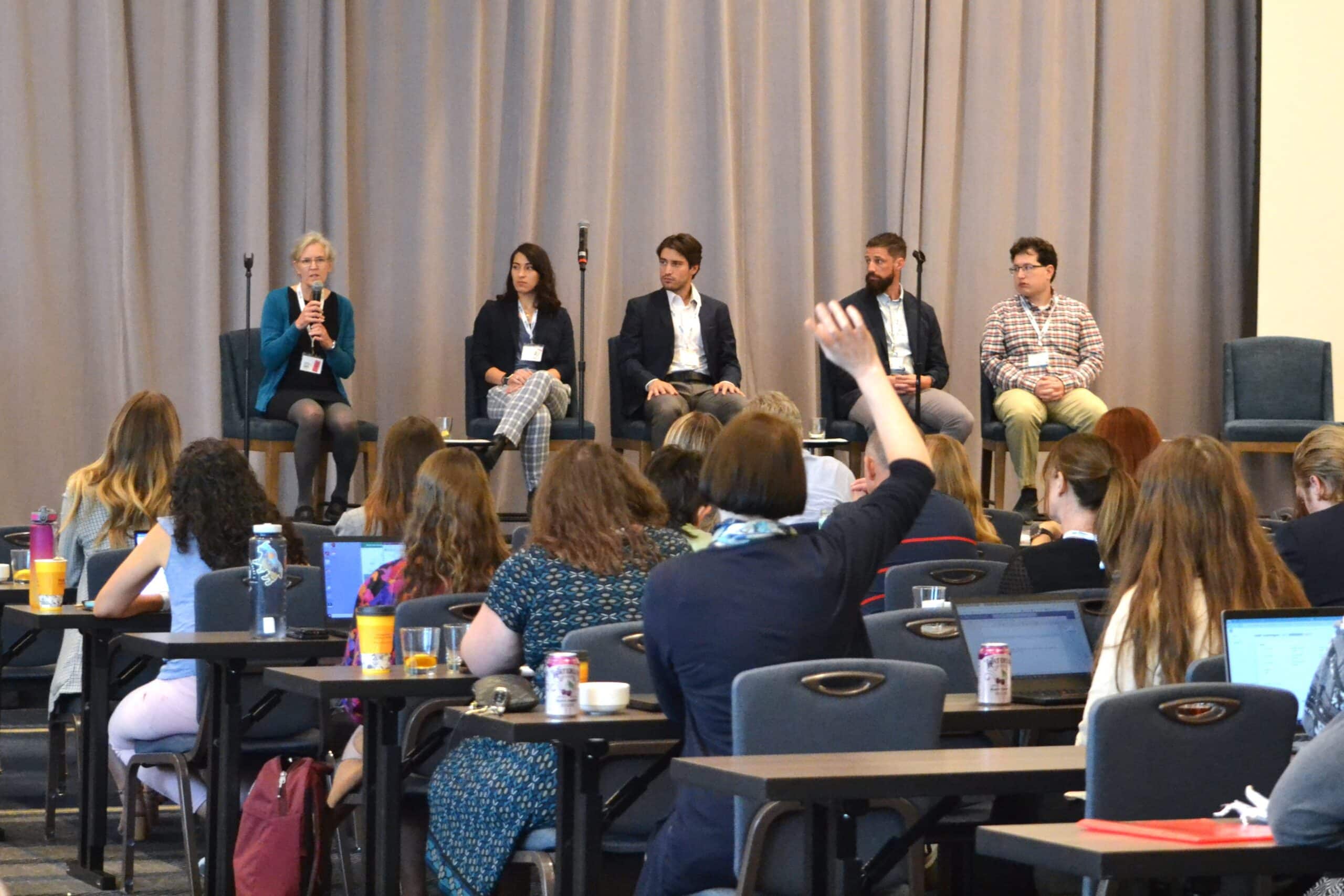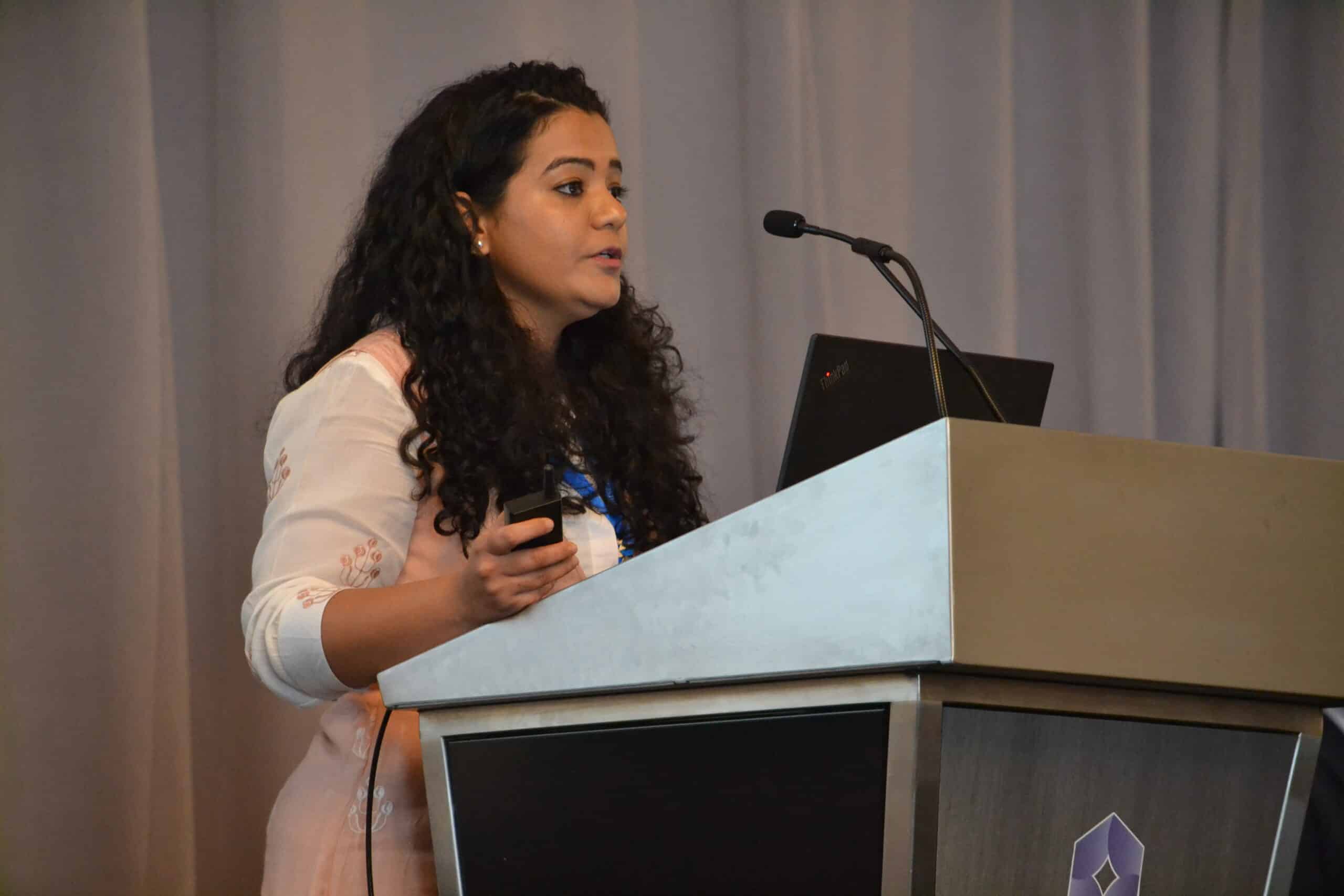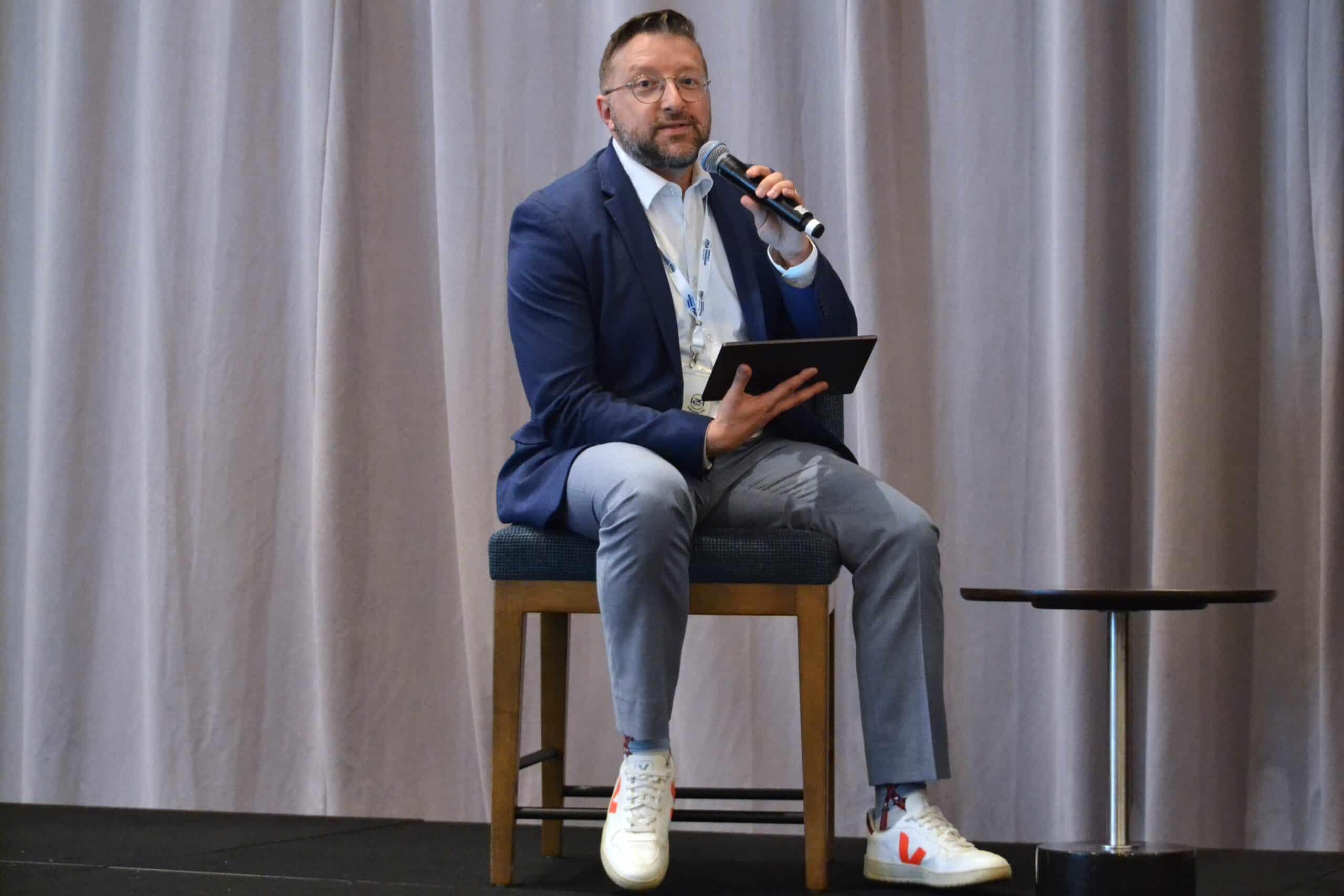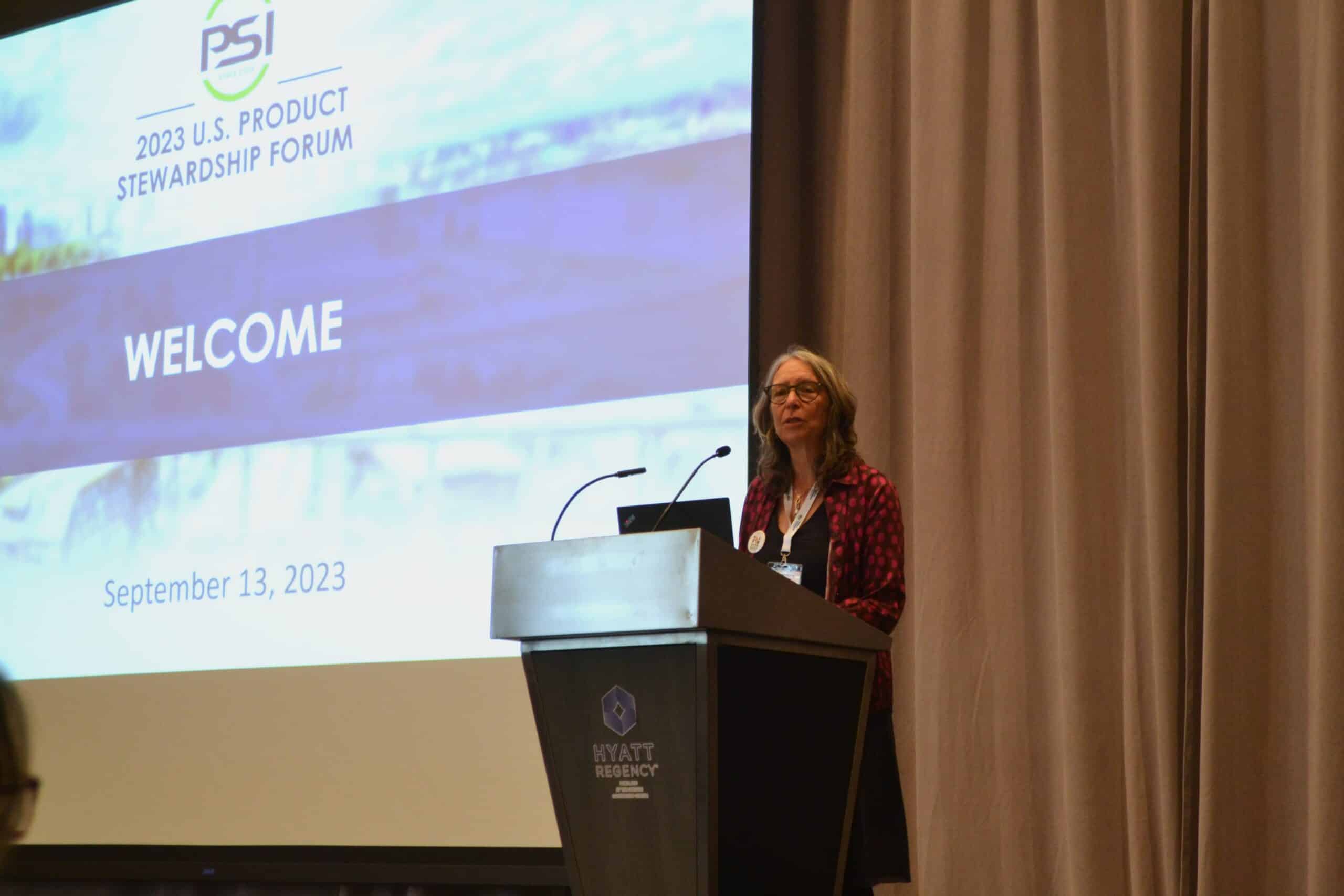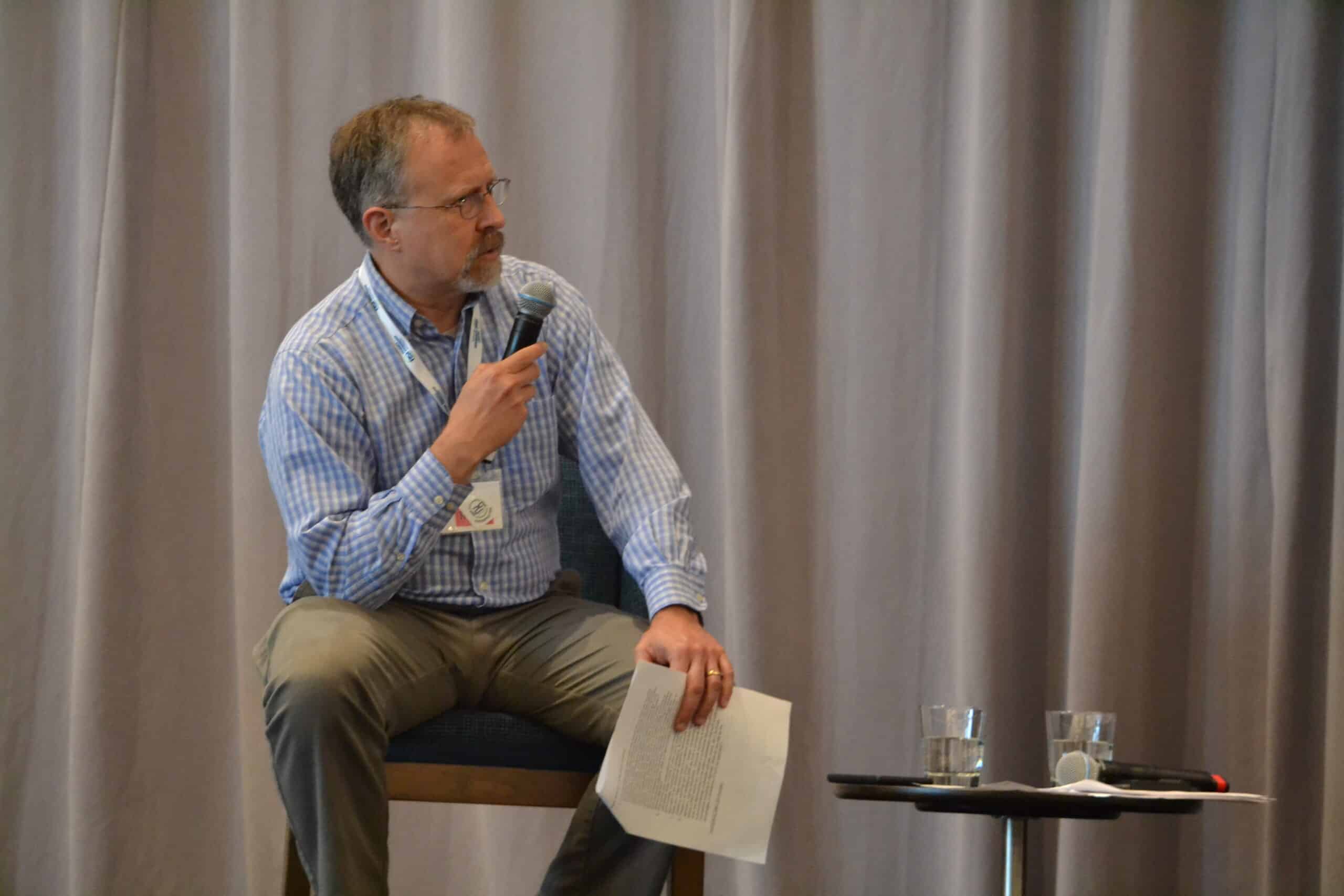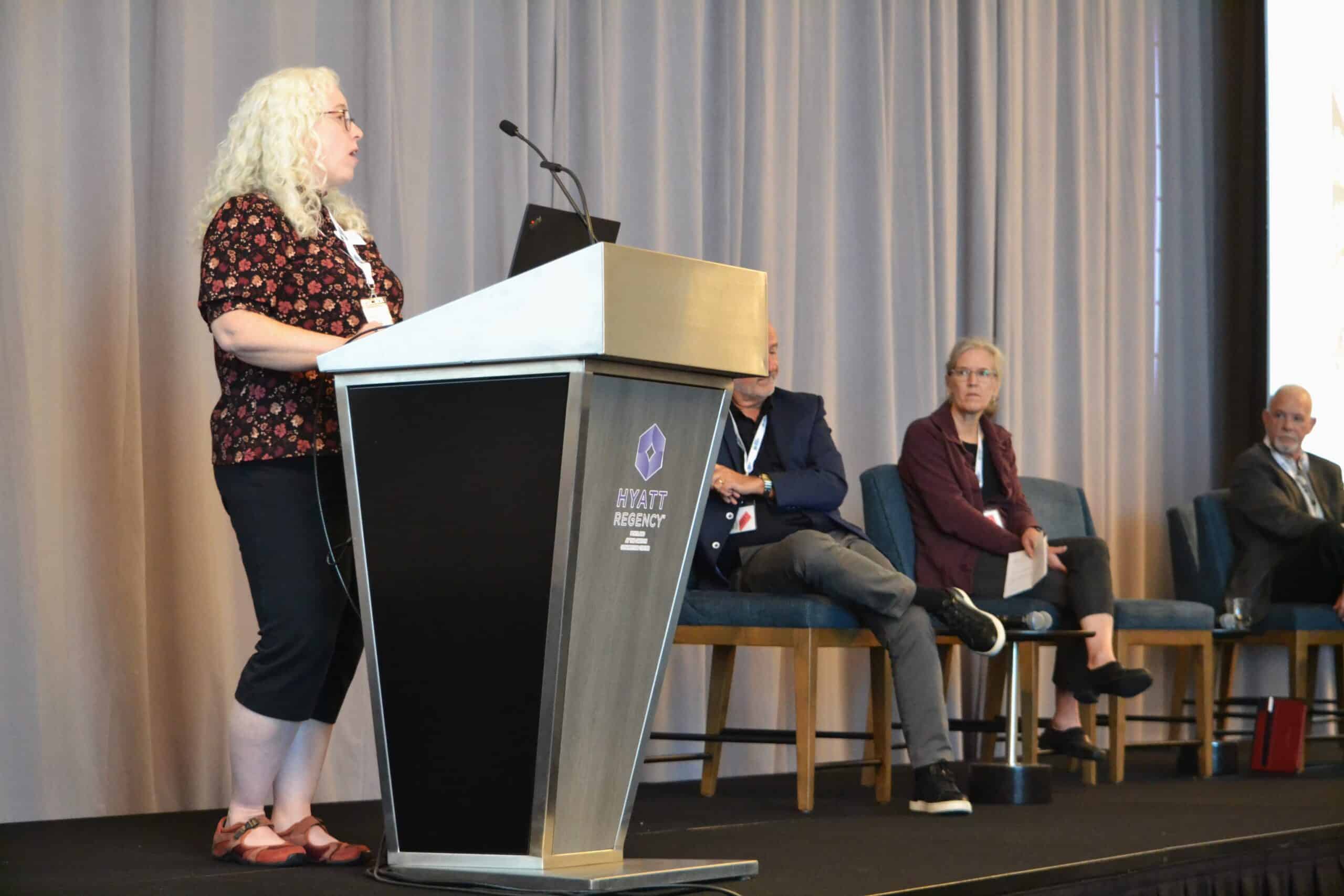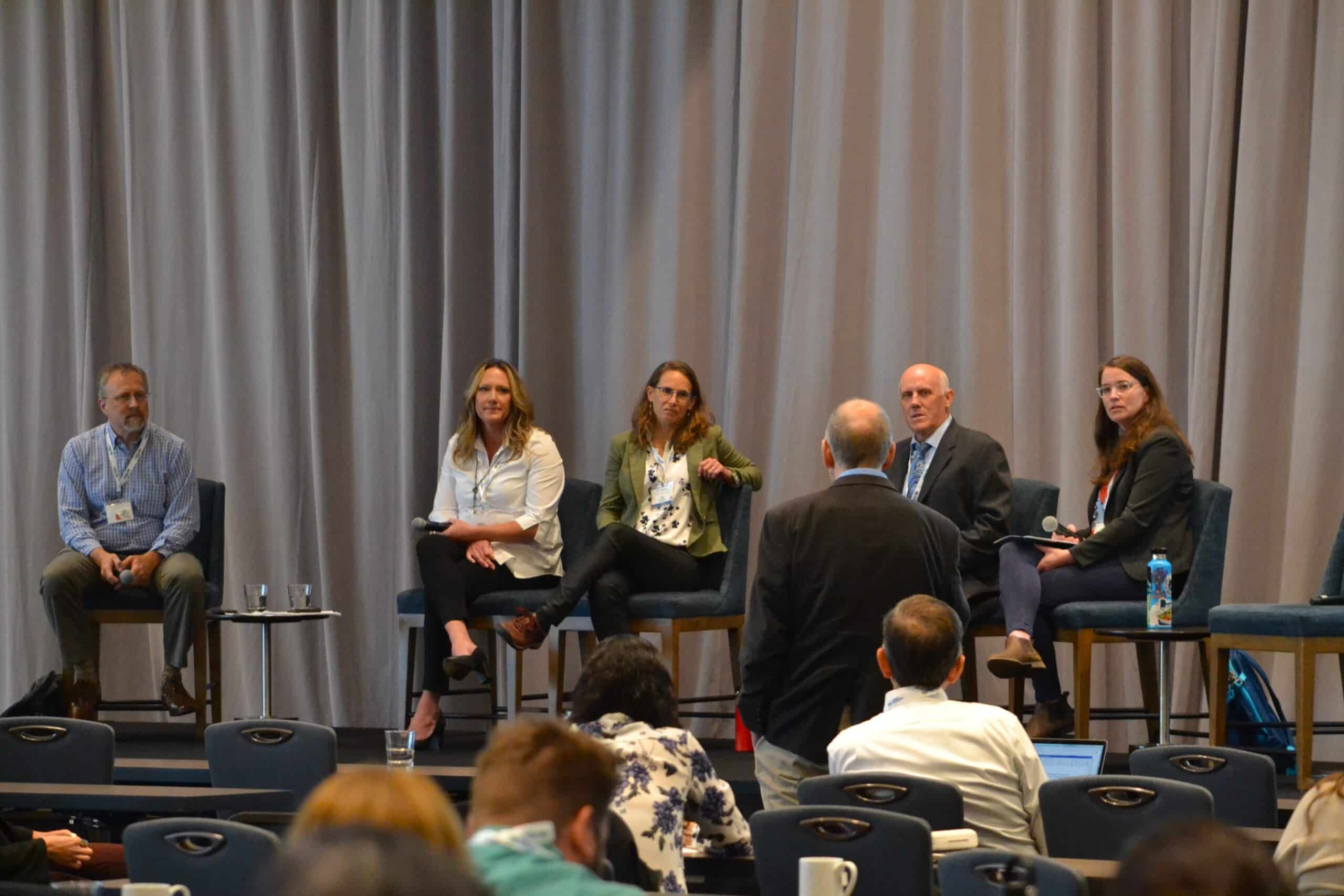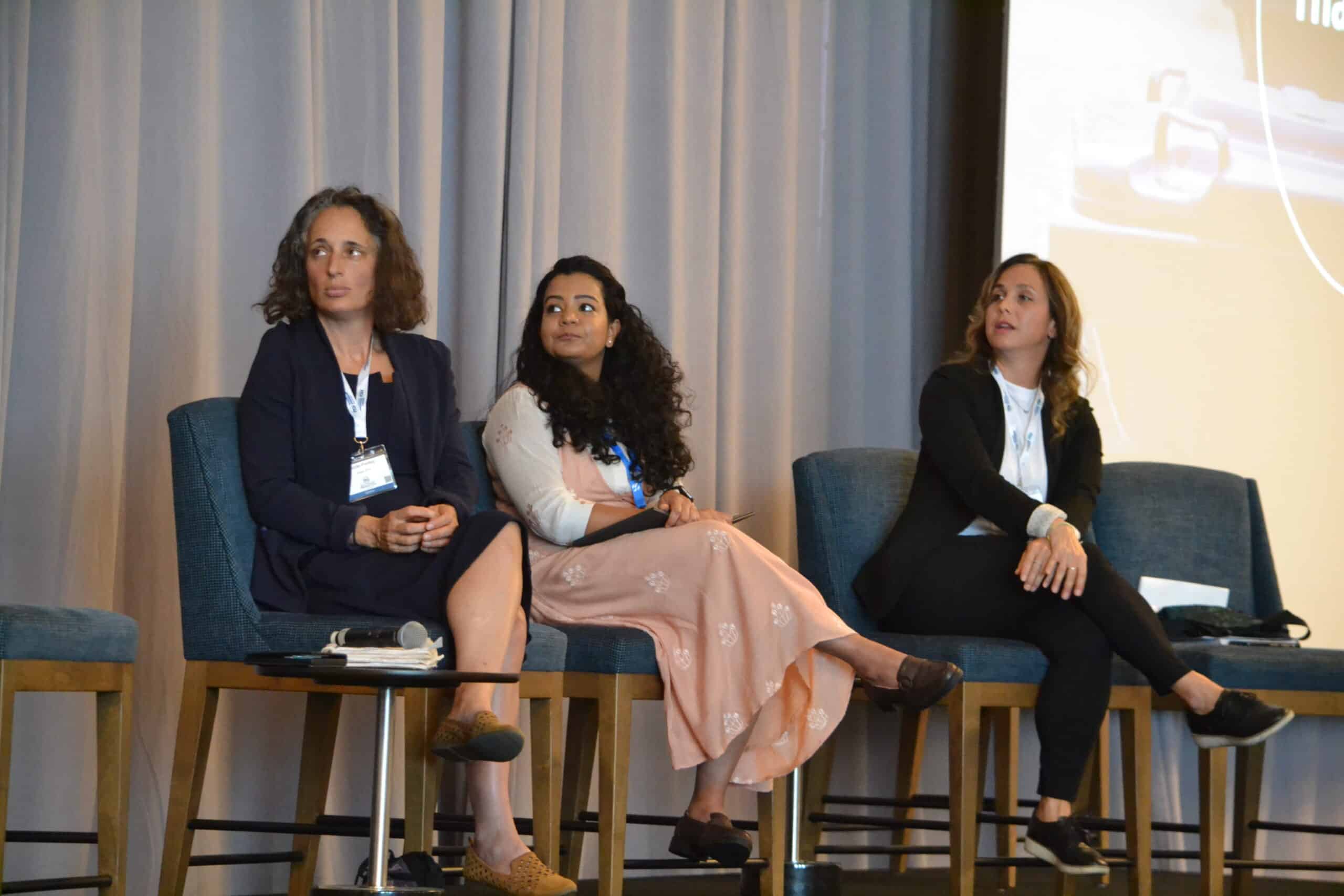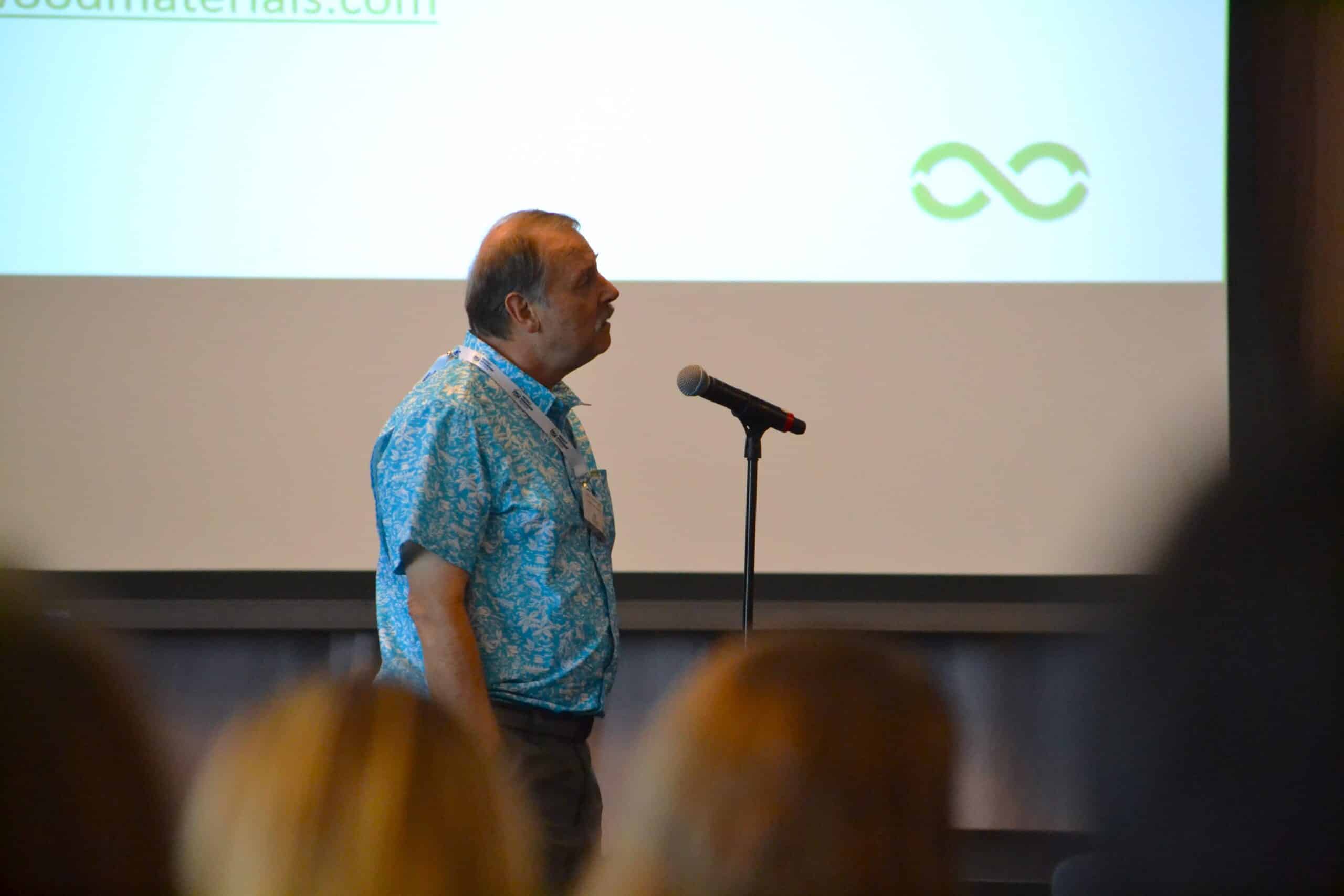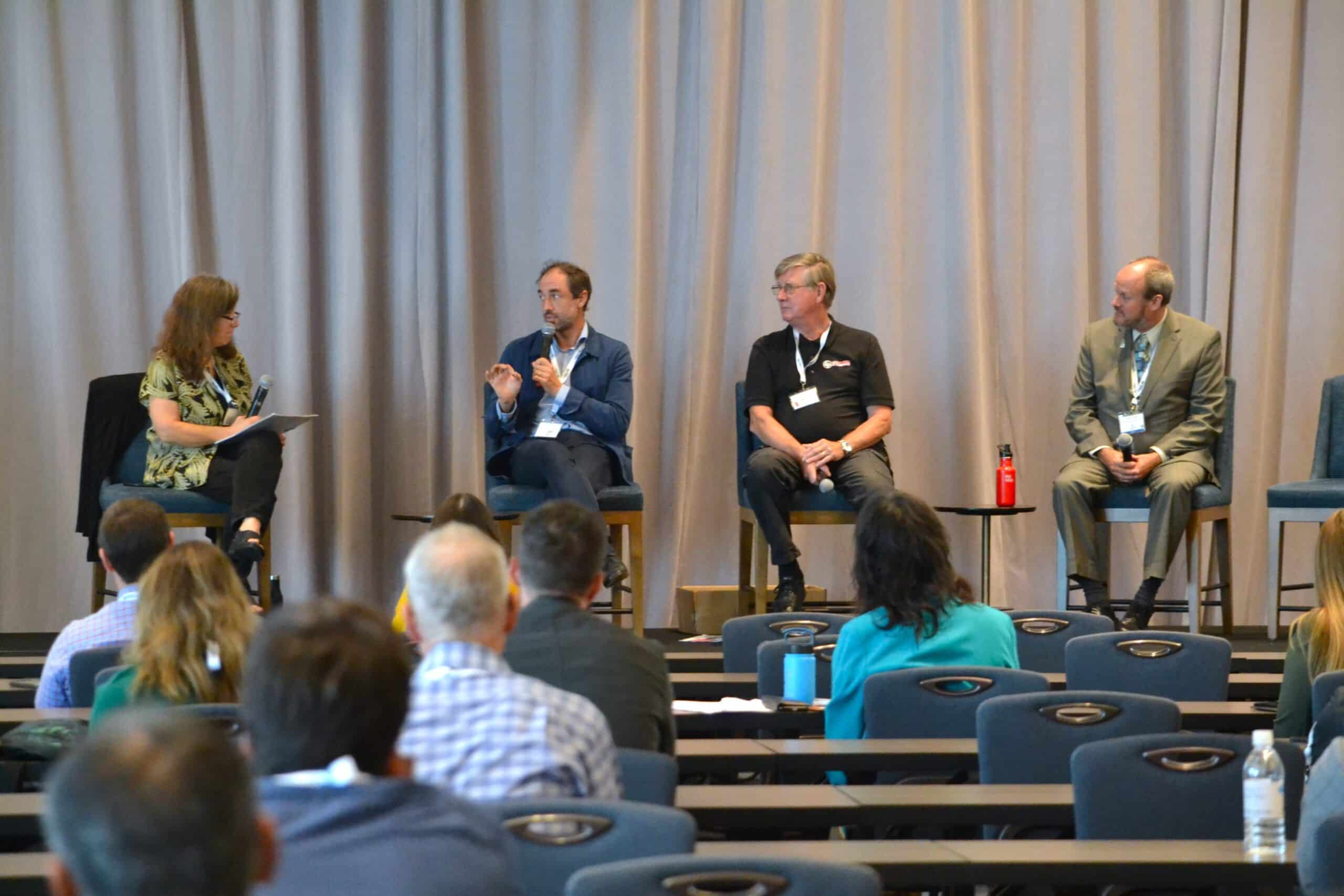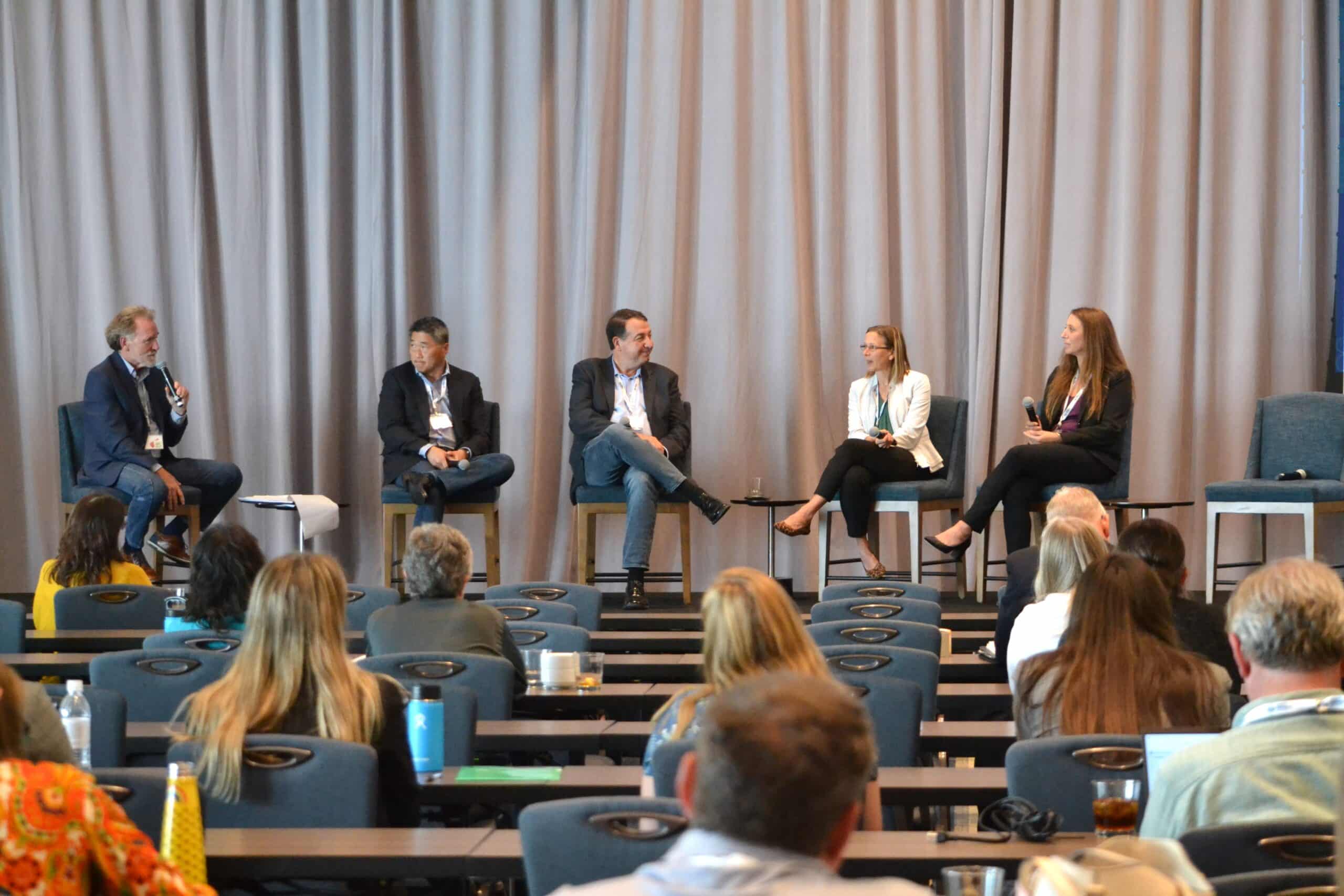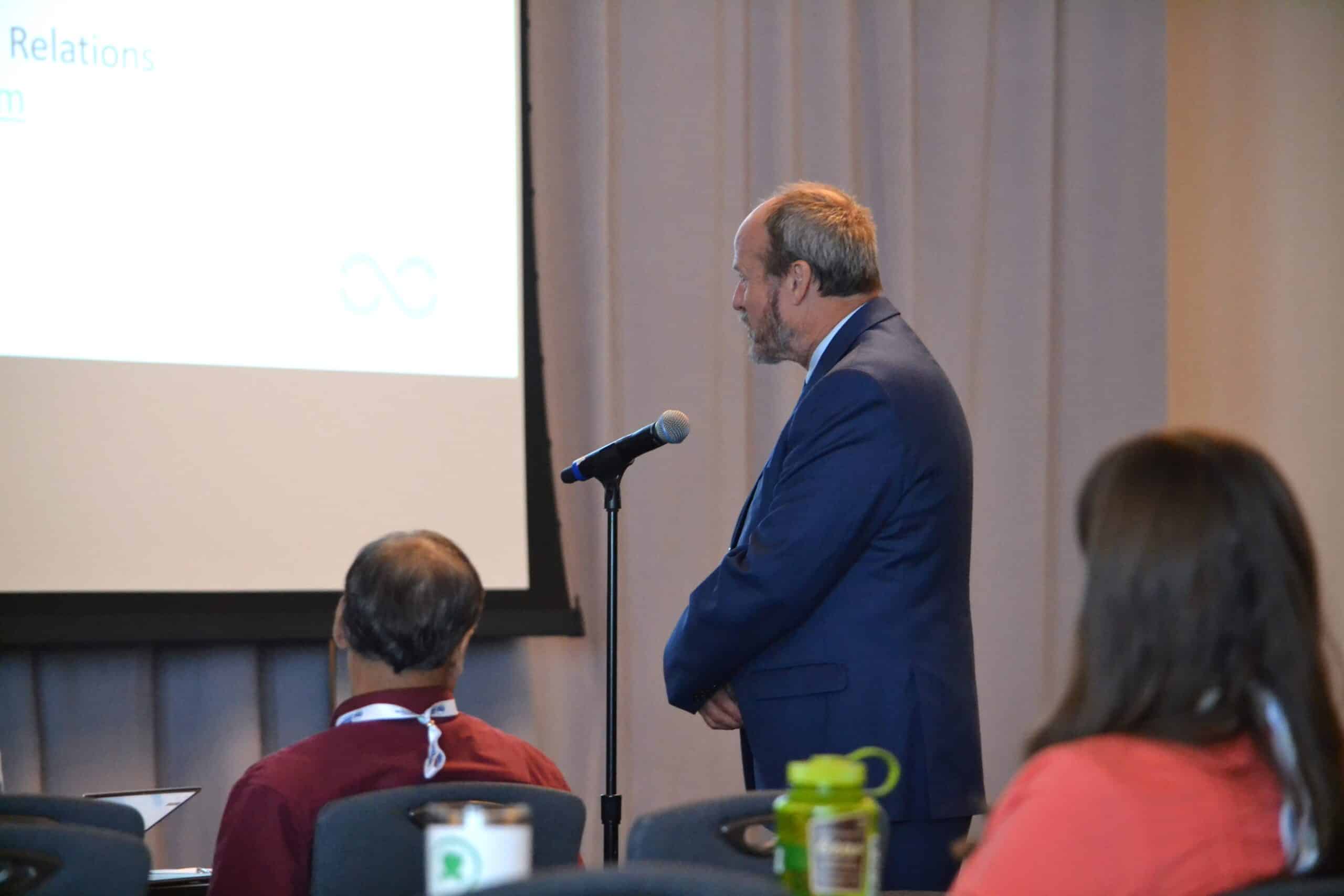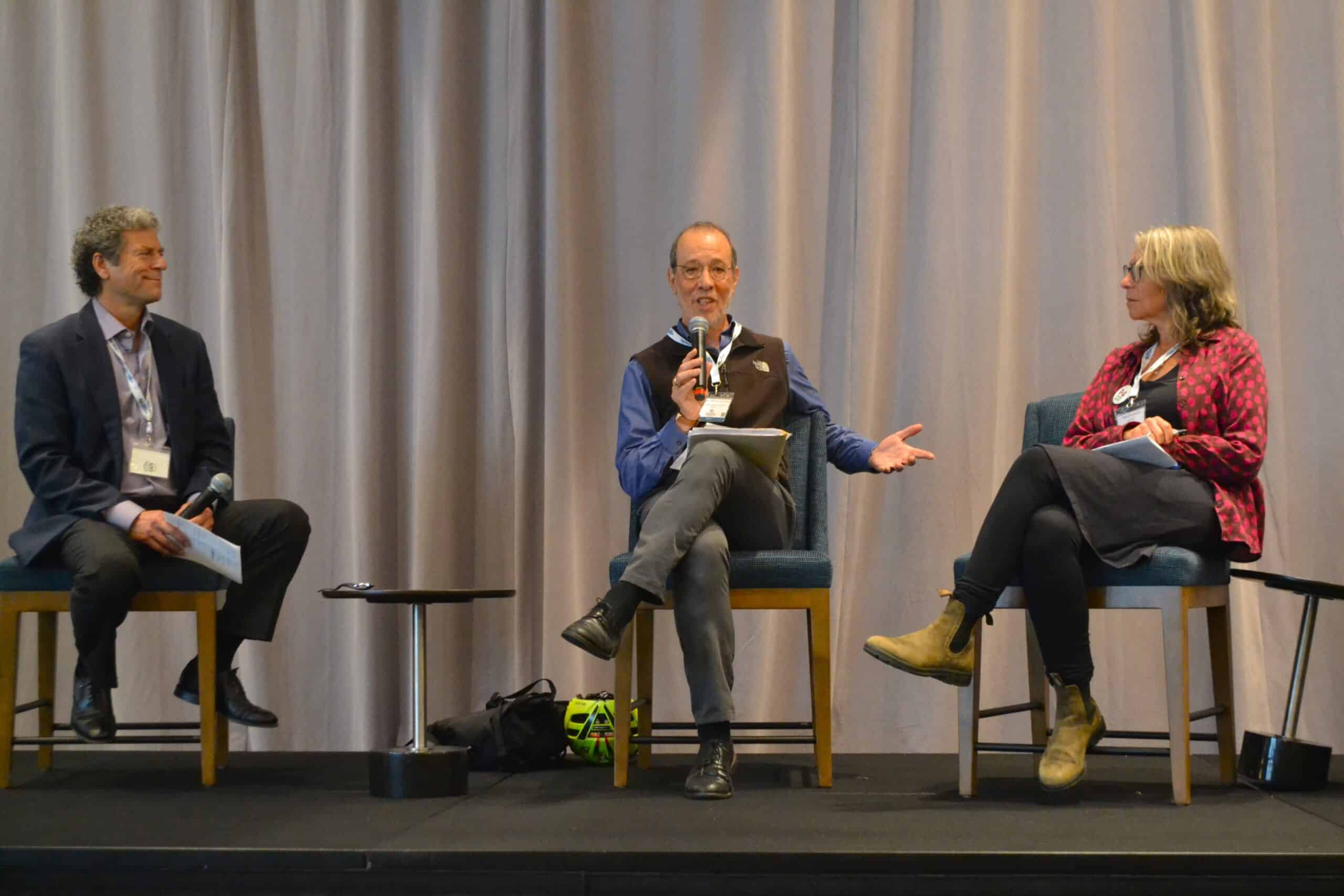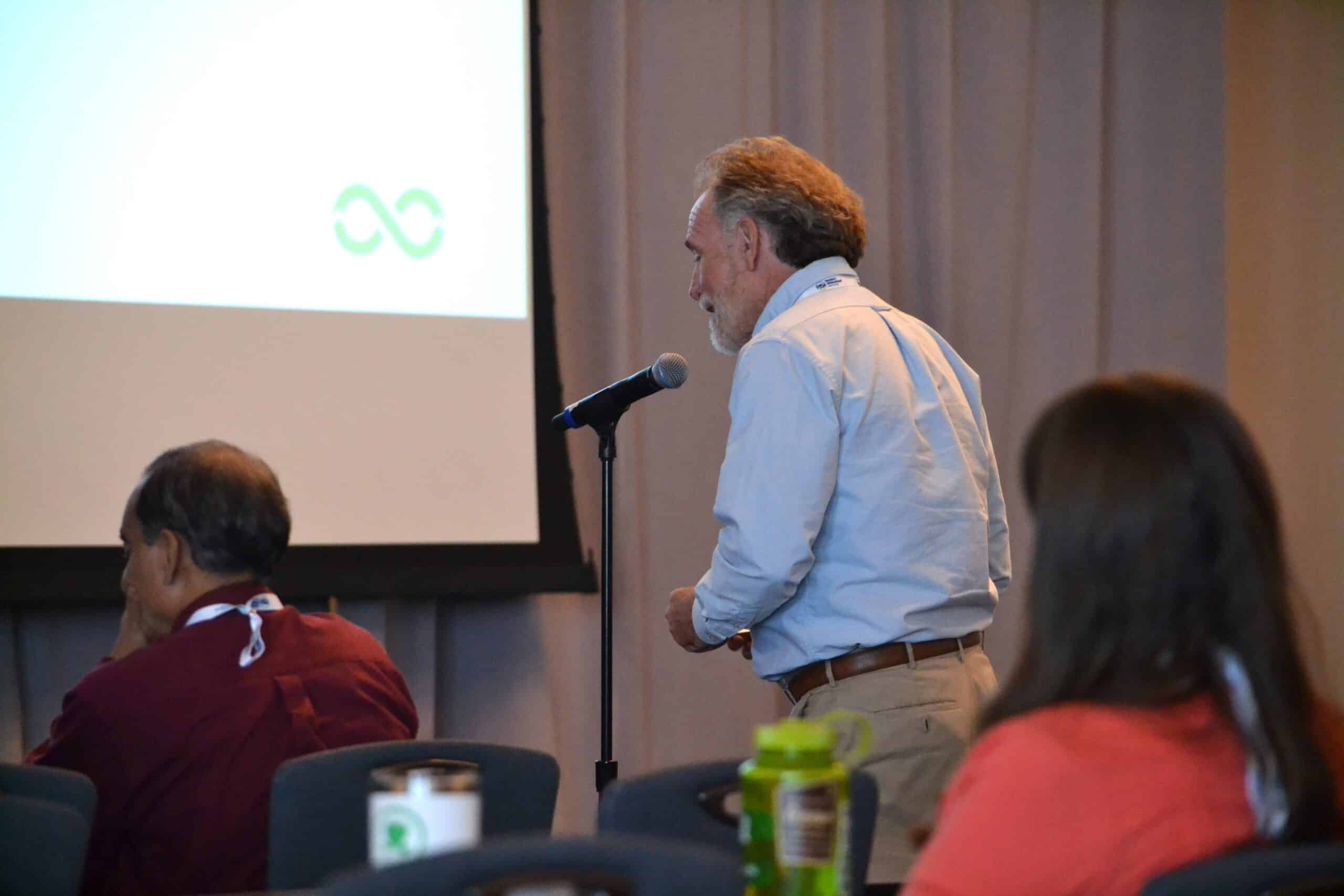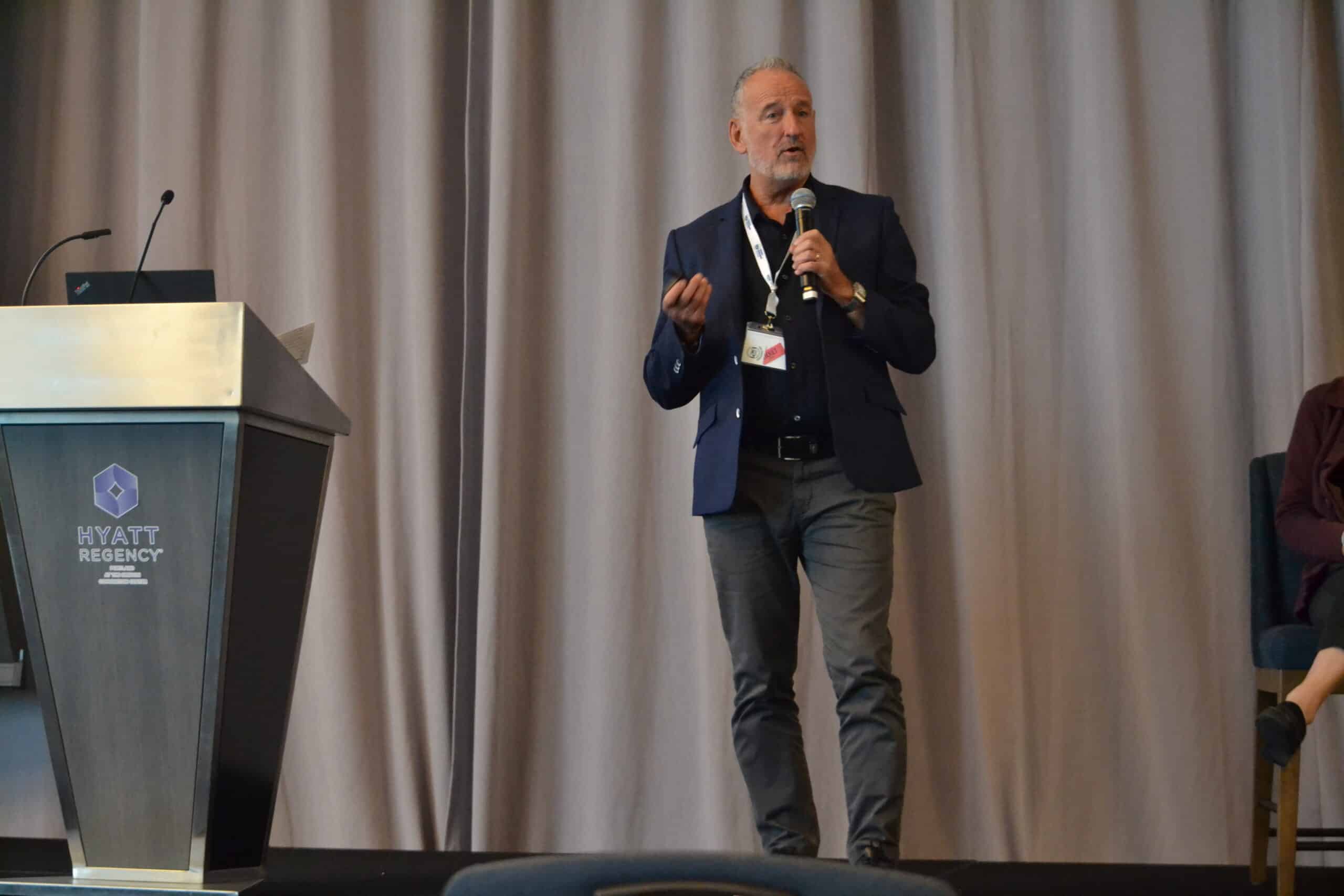by the team at PaintCare, a PSI Partner
For more than a decade, PaintCare has operated manufacturer-led paint stewardship programs in states across the country that make paint recycling convenient. PaintCare is the nonprofit organization created by the paint industry through the American Coatings Association (ACA) to manage the end of life of architectural paint products in states that pass paint stewardship laws. The organization currently operates programs in California, Colorado, Connecticut, District of Columbia, Maine, Minnesota, New York, Oregon, Rhode Island, Vermont, and Washington. A new program in Illinois is currently being planned.
PaintCare organizes year-round drop-off sites conveniently located throughout these states, where households and businesses can bring leftover house paints, stains, and varnishes for recycling. These drop-off sites serve a community need for easier recycling opportunities and keep paint out of the waste stream. The program currently provides a network of over 2,400 drop-off sites in the states where it operates.
While convenient drop-off sites serve the public day-to-day, PaintCare also alleviates the burden of recycling larger quantities of paint – something that particularly impacts painting professionals. The program offers large volume pickups for anyone with 100 gallons or more of eligible paint. Since PaintCare first launched in 2010, it has arranged nearly 10,000 of these free pickups, making it easy for painting professionals to responsibly dispose of leftover paint, and keep it out of the waste stream.
Overall, PaintCare has collected more than 70 million gallons of paint to date.
“Households and businesses greatly benefit from the PaintCare program,” says Nichole Dorr, Vice President of State Programs at PaintCare. “It’s a common challenge for most homeowners, renters, and painters to have leftover paint with no easy solution in sight. PaintCare offers a convenient way to responsibly manage the end of life of your paint.”
What happens to the paint once it’s dropped off at a drop-off site or hauled away during a large volume pickup? PaintCare works with waste transporters to collect the paint and manage it according to a hierarchy of “highest, best use,” meaning as much as possible is given away as-is, recycled, or put to some other beneficial use. PaintCare recently piloted a series of free paint giveaway events that provided thousands of gallons of leftover paint to communities in California and is considering expanding these to other areas.
The statewide paint stewardship programs are funded by a fee (referred to as the PaintCare fee) which is applied to the purchase price of architectural paint sold in each state. The fee amount is based on container size and varies from one program state to another. It covers all aspects of the program: including paint collection, transportation, processing, and public education. This small fee means that those who purchase and use paint each help ensure a system to manage postconsumer paint.
Learning how PaintCare operates allows for a more robust understanding of how the legislative process informs these state program successes. ACA’s government affairs team expertly navigate the political landscape in potential PaintCare states to form recommendations on possible program states as they forge relationships with lobbyists, stakeholders, and others with involvement in the legislative process.
“The goal is to ensure each paint stewardship law is tailored to the needs of each state, yet consistent at its core,” says Jeremy Jones, Director of Extended Producer Responsibility at ACA. “Lawmakers and governors play a decisive role in shaping bills that become laws. However, we work closely with the wide gamut of stakeholders who can convey from their unique vantage point what becoming the next PaintCare state would mean to them. Everyone has a stake in a well-executed PaintCare program and that’s why it’s so important to build quality relationships up front.”
PaintCare continues to build their network of drop-off sites and works closely with many industry organizations to increase awareness of paint recycling opportunities in program states. For more information about paint recycling, visit PaintCare at www.paintcare.org. To get involved in the legislative effort in the next PaintCare program, email Jeremy Jones at jjones@paint.org.
Earlier this month, over 200 globally recognized experts gathered in Portland, Oregon for PSI’s 12th U.S. Product Stewardship Forum. Speakers presented throughout two days of intensive sessions on a wide range of topics covering the most important trends in producer responsibility policy and programs. While all of the sessions were insightful and high quality, the following notable quotes were made during a few of the top sessions.
Extending Responsibility: Eco-Modulated Fees and Responsible End Markets
“Eco-modulation must go beyond incentives, it is about making sure the fee structure reflects the real costs of managing the packaging material and its impact in the value chain.”
Genevieve Dionne, Éco Enterprise Quebec
“Eco-modulation works, period. But it could be gentler, and it could be less complicated for the producers and other market players.”
Gauravi Saini, Reclay StewardEdge
Perspectives on Plastic Recycling – From Mechanical to Chemical
“Mechanical and chemical recycling need to be complementary solutions. The complexities of plastic waste require both to deliver a truly circular economy”
Maranda Demuth, Eastman
“We need to have a robust conversation on whether chemical recycling is worth its environmental impacts.”
Celeste Meiffren-Swango, Environment Oregon
The PRO’s Role in the Circular Economy
“Having a not-for-profit producer-governed organization that supports producers in meeting their EPR commitments ensures efficient and effective recycling systems are in place where plastics and other packaging materials are collected, recycled, and returned back to producers for use as recycled content.”
Allen Langdon, Circular Materials
“We are working with local governments and recyclers to determine how to effectively support recycling systems.”
Shane Buckingham, Circular Action Alliance
“The hallmark of successful systems is a focus on the goals and the desired outcomes.”
Leslie Huska, GreenDot North America
Packaging EPR Implementation in the United States
“The Oregon law prioritizes sustainability above circularity. There is potential for these ideas to be in conflict and the Oregon law aims to achieve broader sustainability objectives. If we pursue circularity in a narrow way and just focus on recycling and composting, there might be some unintended outcomes.”
David Allaway, Oregon Department of Environmental Quality
“In California, we are focused on the reduction of plastic pollution and overall production of packaging materials in the state. The California law requires that 100% of packaging sold into the state of California is either recyclable or compostable, by 2032.”
Rachel Machi Wagoner, CalRecycle
KEY TAKEAWAYS
Throughout the rich and diverse discussions at the conference, the following important issues were highlighted as they are becoming increasingly important in the field of EPR.
- Policy Harmonization: All stakeholders expressed the importance of identifying common elements of all EPR bills and laws. Policy harmonization is not only crucial for increasing the efficiency of existing and future programs, but also for ensuring alignment across jurisdictions, reducing consumer confusion, and enabling effective program comparison.
- Measuring Success: Congruent with the need for policy harmonization is the need to define how the success of a program or policy is measured. It is essential to identify what needs to be measured, ensure that data collection is accurate and consistent, and provide all stakeholders with relevant information.
- Producer Presence: As the field of EPR continues to advance, it will be necessary to directly involve producers, along with associations, in the conversation. Without representation from key producers, a valuable perspective on the field is lost. The interest of individual producers and their associations are essential to advancing effective EPR policy.
WHAT ARE PEOPLE SAYING ABOUT THE CONFERENCE?
We are shifting into a new phase of the EPR movement with rapid success and the need for engaged stakeholders and a highly knowledgeable community. The PSI Forum will continue to be a space for those eager to learn and contribute as we lead this movement forward. Here are some thoughts from 2023 PSI Forum attendees on the importance of event:
“PSI did it again, assembling the world’s experts on EPR (those actually engaged in making it happen) and presenting two days of rich, productive conversations about the current state of affairs in the U.S., Canada and Europe and where things are headed, on a wide variety of products as well as packaging. Kudos to PSI for being able to bring such diverse parties to the conference in a series of stimulating panels. PSI continues to be THE place to go for expertise, ability to bridge government, business and advocacy groups, and the many connections, contacts and synergies possible.”
Dave Galvin, former PSI board president
“PSI’s conference enables State Environmental Staff, PROs, Recyclers and NGOs to collaborate on EPR. With the growth of EPR, this conference is becoming essential to those involved with environmental policy and execution.”
David Bender, CEO Circular Polymers by Ascend
“Excellent forum about all aspects around EPR. Competent speakers, lively discussions about the hot topics, engaged participants, perfect networking. The place to go in the US!”
Joachim Quoden, Managing Director EXPRA
“The 2023 US Product Stewardship Forum provided a wonderful opportunity to connect and have meaningful and in-depth conversations with others working to find solutions to how we can move the solid waste industry from a linear (extract, make, use, dispose) system to a more circular economy. Learning from each other and working together, we can take actions that have long-term positive results for our customers and the environment!”
Susan Fife-Ferris, Seattle Public Utilities, Washington
“Fun, productive, and a truly unique meeting of the minds from across the globe!”
Maya Buelow, Lane County Waste Management, Oregon
“Scott and the PSI team put together an excellent event. The structure was just right to allow attendees to choose which sessions they wanted to attend without having to choose from overlapping sessions. Looking forward to the next Forum two years from now!”
Doug Kobold, California Product Stewardship Council
CONTINUE THIS WORK WITH US
PSI will continue to lead these conversations with other experts through our webinar series this fall. Our webinars will cover a range of pressing issues and we look forward to your participation. For more information, sign up for our monthly newsletter.
BOOK NOW AVAILABLE
Scott Cassel, CEO and Founder of the Product Stewardship Institute, debuted his recently published book, Perspectives on Product Stewardship: Navigating an extended producer responsibility path to a circular economy, at the 2023 U.S. Product Stewardship Forum. This book is a must-read for all EPR professionals. Click here to purchase your copy! If you are a PSI Member or Partner, contact info@productstewardship.us for 30% discount.
PHOTOS FROM THE FORUM:
by Jim Asali, President and CEO of the Pack Green Coalition, www.packgreen.org
In an era dominated by ominous news of the impacts of climate change—most recently evidenced by devastating fires in Maui—and a legitimate plastic pollution crisis that appears to have no end, Pack Green is here to offer a bit of encouragement. Sustainable packaging innovation is on the rise and offers smart alternatives to single-use plastics that far too often clog our landfills and pervade our lands and waterways. In 2023, we have happily taken note of environmentally-friendly packaging advancement across three major sectors: consumer packaged goods, produce, and beverages. Here, we highlight promising developments in each of these spaces:
CPG
American toy manufacturer Mattel—the creator of Barbie—has publicly pledged to (1) achieve 100% recycled, recyclable, or bio-based plastic materials in its products and packaging by 2030, (2) maintain 95% recycled or Forest Stewardship Council (FSC)-certified content in the paper and wood fiber used in its products and packaging, and (3) reduce plastic packaging by 25% per product by 2030. In addition to its packaging and materials pledges, the company has also started the Mattel Playback scheme, which seeks to keep the toys and materials in circulation longer through recycling. The program currently accepts Barbie, Fisher-Price, Matchbox and MEGA toys for recycling, and is available in the US, Canada, France, Germany and the UK.
LEGO—the world’s leading toy manufacturer—announced in its annual results that it has begun to transition to paper-based bags in LEGO boxes, putting it on track to make all of its packaging from more sustainable sources by the end of 2025. In its factories, it has continued to invest in reducing waste, operating more energy efficiently, and expanding production and use of solar energy.
As part of its commitment to sustainability, consumer goods giant Procter & Gamble has pledged by 2030 to reduce its use of virgin petroleum plastic in its packaging by 50%. As part of this process P&G has invested in technology to improve the efficacy of post-consumer recycled content to more closely match that of virgin materials.
Produce
Paper companies have long embraced the inherent advantages of fiber-based packaging over plastic, even as the latter has sought to make inroads into grocery and produce protection. Two of these makers of sustainable paper packaging solutions are Georgia-based WestRock and Graphic Packaging International. WestRock creates packaging for several industries, including food, beverage, healthcare, retail, beauty, and more. Its EverGrow® Collection includes punnets, tills, totes, and trays produced specifically for growers, distributors, and retail produce brands. EverGrow® is made from renewable paperboard and allows for curbside recyclability when emptied and flattened, offering an alternative for hard-to-recycle plastics.
The same goes for the ProducePack™ line of fresh produce packaging from Graphic Packaging International. ProducePack™ is a line of paper-based fruit packaging that offers a variety of sustainable, shelf-ready solutions for fresh fruit and vegetables. In addition, the ProducePack™ Punnet includes a wide range of applications to deliver an effective alternative to traditional plastic/acetate produce packaging for retailers and producers.
Beverage Containers
Holland, Michigan-based Boxed Water™ is emerging as a leader in the transition away from plastic beverage bottles. Currently, there are roughly 38 billion single-use plastic bottles landing in U.S. landfills and waterways each year, a figure that takes into account the current recycling rate of single use plastic water bottles of around 25%. Boxed Water has sought to address this using simple formula: the least amount of plastic and the most renewable materials, the better the package. Its box is FSC-certified and 92% plant-based, made from paperboard and paper waste. The FSC- and ISCC-certified water box cap is made of pine tree waste, harvested responsibly from Nordic forests. The result is a low carbon-impact product that is also 100% reusable and recyclable.
In the 2010s a consortium of packaging, bottling and beverage manufacturers—including the Carlsberg Group—worked together to create an innovative paper bottle. The result was PABOCO (Paper Bottling Company), which has developed bio-based bottle prototypes in Europe and has invited additional partners to join in its efforts, including Coca-Cola, L’Oreal, Pernod Ricard, The Absolut Company, and Procter & Gamble.
In yet another encouraging development, American food and beverage company PepsiCo has unveiled its plans to replace plastic rings on beverage multipacks across the US and Canada with recyclable paper-based designs. In 2022, Coors Light announced that it will globally shift away from plastic rings to cardboard-wrap, a move the company said will save 1.7 million pounds of plastic waste annually by 2025.
Conclusion
While the problem of plastic pollution is multi-faceted and may seem overwhelming, we know that the solution will come down to the basics of reducing virgin output, improving a fractured and anemic recycling system, and increasing re-use as we move away from our throwaway culture. Only through a concerted effort to combine the foregoing dynamics will we be able to achieve circularity and ameliorate the adverse impacts environmental, health, and aesthetic impacts of our drastic overuse of plastic packaging. The advent of the products and innovations described in this post gives us reason to believe we are beginning to make progress.
by Scott Cassel, CEO and Founder
PSI is excited to announce our partnership with GreenDot, a full-circle EPR management and recycling solutions provider in Europe and North America. GreenDot was founded in Germany in 1990 under the name Der Grüne Punkt (The Green Dot). There, it created the world’s first nationwide EPR program for household packaging, including hard-to-recycle plastics like flexible films. Der Grüne Punkt continues to design and operate every aspect of EPR management—including collection, sortation, and recycling—and now services more than 80 million people. The German EPR packaging model is considered the forerunner of the European Union’s current regulatory structure. It has inspired more than 30 packaging recovery organizations in Europe over the last 30 years.
In August of 2022, Der Grüne Punkt was purchased by Circular Resources and rebranded as Green Dot Global, which oversees a growing list of international affiliates that includes operations in North America and Europe. The company plans to expand operations into additional countries around the world with the aim of providing multinational consumer product brands solutions to meet their global recycling and recycled content targets.
GreenDot currently serves over 100,000 customers with a suite of EPR management services—including guidance on EPR compliance obligations; transparent tracking of collection, sorting, and recycling volumes; documentation of CO2 equivalent reduction through recycling; and certification of recycled content in plastic packaging. Their solutions aim to accelerate plastics circularity, even for challenging materials like flexible films. Annually, GreenDot recovers more than one million tons of household packaging waste and processes over 70,000 tons of post-consumer plastic packaging and LDPE. GreenDot’s recycling operations save over 600,000 tons of CO2 equivalents annually. GreenDot’s comprehensive approach—built on a passion for measurable change and problem-solving—helped drive Germany’s plastic packaging recycling rate from 3% in 1991 to over 60% today.
Now, they are bringing their decades of hands-on, real-life expertise to improve recycling in the United States, where the plastics recycling rate lingers under 10%. GreenDot will leverage its experience and technologies to develop effective, community-tailored collection and recycling solutions that benefit brand companies and make a lasting impact on underserved markets in the U.S.
***
GreenDot is a Platinum Sponsor of the 2023 U.S. Product Stewardship Forum. We hope you’ll join them in Portland, Oregon September 11-14, where you can meet some of their leadership team members in person: Leslie Hushka, Managing Director of Green Dot North America, and Chief Sustainability Officer of Green Dot Global Group; Geoffrey Inch, Vice President, Sustainability & Policy; J.J. Rawlinson, Sustainability Director.
Contact info@green-dot.us to connect with Green Dot North America leadership.
by Hanz Atia, Associate, Policy & Programs
The COVID-19 pandemic expedited the growth of at-home care for all types of patients and that number is expected to continue to grow. While at-home care has several challenges, one that is least talked about is how to properly dispose of medical and pharmaceutical waste outside of a healthcare facility.
Stericycle, a PSI partner, recently released its second annual Healthcare Workplace Safety Trend Report, revealing key perspectives and insights for improving patient and provider safety, including the challenges of managing medical and pharmaceutical waste in at-home care settings.
The report found that most healthcare providers (90%) and administrators (83%) expect the rate of at-home care to increase over the next five years. Only half (53%) of providers surveyed said they know how to dispose of medical waste in a safe manner in at-home care settings. That concern is increasing; in 2021, 65% of providers agreed their knowledge of disposal in at-home settings was sufficient. Providers are also concerned about the resources available, with less than half (41%) believing they have the adequate tools and resources available to properly dispose of regulated medical and pharmaceutical waste in at-home care settings.
On the heels of immense change brought on by modernization, new technology, changing expectations – and of course, the COVID-19 pandemic – the report delivers actionable steps for healthcare organizations to help create a healthier and safer environment for their patients and staff. Stericycle’s recent blog also shares critical information.
Medical “sharps” – disposable needles, syringes, and lancets – also allow people to self-inject medications at home and in public spaces. Americans discard more than three billion of these materials each year, often dumping them down drains or in the trash, but medical sharps can pollute the environment and injure sanitation workers. For more on solutions for medical sharps management, visit our product page.
by Rachel Lincoln Sarnoff, Marketing & Communications Director
Next week, world leaders will gather for the second session of the Intergovernmental Negotiating Committee on Plastic Pollution. Although PSI was invited to attend and contributed to discussions leading up to the event, we were unable to make the trip.
INC-2 will take place from May 29 to June 2 at the United Nations Educational, Scientific and Cultural Organization (UNESCO) headquarters in Paris. This meeting will be followed by INC-3 in Kenya in November and INC-4 in Canada in April 2024. At each meeting, EPR will be front and center.
Recently, the Ocean Plastics Leadership Network shared analysis of proposals submitted by UN member states, which showed that 60% referenced EPR. OPLN indicated that the number was probably higher because those that referenced “product stewardship” rather than “EPR” were not included in the evaluation.
Critical to the conversation is the Peak Plastics report published by Economist Impact and The Nippon Foundation earlier this year as part of their Back to Blue initiative. This report showed that on their own, many of the policies being considered — including Single Use Plastic Product (SUPP) bans, EPR for packaging, and an aggressive carbon tax on virgin plastic — are insufficient to affect the projected doubling of plastic consumption by 2050. However, when implemented together they could significantly reduce consumption: “EPR is…vital, as it will improve waste collection and increase recycling rates, which will curtail plastic leakage into the environment.” This is in keeping with PSI’s perspective on EPR for packaging, which is most effective when implemented alongside additional measures such as reuse strategies.
The genesis of these discussions began at the fifth session of the United Nations Environment Assembly (UNEA-5.2) in 2022, when UNEA Resolution 5/14 was adopted. Its goal is to develop an international legally binding instrument to end plastic pollution by 2024. Without significant intervention, the UN projects a tripling of the amount of plastic waste entering the marine environment — from as much as 14 million tons per year in 2016 to as much as 37 million tons in 2040.
by Hanz Atia, Associate, Policy & Programs
When dumped in the trash or flushed down the drain, pharmaceuticals can contaminate our environment – and, when left in medicine cabinets, drugs can cause accidental overdoses. But Oregon just passed an amendment to its 2019 EPR law, which expands the type of facilities at which covered drugs under drug takeback programs may be disposed. SB 411 will now go to Governor Tina Kotek for signature.
In 2010, PSI led a national coalition to pass the Secure and Responsible Drug Disposal Act and change related regulations that made it possible for retail pharmacies to host drug take-back programs for unwanted medicines, including controlled substances. That year, we developed model pharmaceuticals EPR legislation with our national coalition; by 2012, PSI Member Alameda County had used our model to establish the first pharmaceuticals EPR ordinance in the country, which was upheld by the courts despite industry appeals. Learn more on our pharmaceuticals product page.
We testified in support of SB 411, which added federally regulated medical waste incineration facilities to Oregon’s drug disposal program. These facilities provide incineration service options in other state drug take-back programs, providing additional competition that can potentially lower drug disposal costs.
Editor’s note: This legislation was signed into law on May 23, 2023.
by Suna Bayrakal, Director, Policy & Programs
Many household products – including cleaning fluids, varnish, paint removers, fuel additives, and gas cylinders – contain toxic and/or flammable ingredients. Although the U.S. Environmental Protection Agency sets stringent requirements for hazardous waste generated by businesses, it does not regulate household products that contain the same hazardous materials. Known as Household Hazardous Waste (or “HHW”), these products should require special handling once consumers are finished using them. Many local governments run HHW collection events to help residents safely dispose of these products, but these events are infrequent and often underfunded; others build and operate permanent facilities that collect HHW year-round, but at a major and growing expense to taxpayers and government. In many communities, where there is a lack of collection facilities or events, or inconsistent HHW collection services due to the limited resources of local governments, significant quantities of these materials are disposed of in the trash or down the drain – it is estimated that 855 tons or more per year of HHW are being disposed of in landfills in Vermont. These unsafe disposal practices contaminate the environment and threaten the safety of drinking water; when stored at home, HHW puts children and pets at risk for poisoning and can cause fires or release dangerous pollutants during flooding. This is the problem that Vermont set out to solve with first-in-the-nation HHW Extended Producer Responsibility – known as “EPR” – legislation, which is now on Governor Phil Scott’s desk.
H.67 creates a statewide HHW EPR program, which will be managed and sustainably funded by the manufacturers of these products. Local governments will have the opportunity to participate in the program and be reimbursed by manufacturers for their costs of collection; they will also save money as transportation and processing costs are assumed by manufacturers H.67 is consistent with current EPR best practices and contains key elements necessary for implementation of an effective HHW EPR law, including:
- Performance goals to measure progress;
- Annual reporting to provide transparency and monitor program implementation;
- Education and outreach to raise public awareness about how to safely manage HHW and reduce leftover products, including targeted to Vermont’s diverse ethnic and environmental justice populations; and
- Opportunities to improve the plan as the program is implemented and matures.
HHW EPR programs have operated successfully in Canada since the 1990s and, in the past few years, expanded to new provinces based on that success. In Manitoba, collection volumes increased four-fold in the first five years of program implementation; in British Columbia, more than 131,000 gallons of HHW were collected in 2017. Over the past decade, PSI analyzed the operational feasibility of EPR for HHW in the U.S., as well as best practices and lessons learned from existing programs across Canada.
“H.67 is the first law in the United States that brings producers of the most toxic and consequently difficult and costly to manage portion of the waste stream to the table to develop a plan that creates cleaner land and water for all Vermonters,” said Jen Holliday, Director of Public Policy and Communications for the Chittenden Solid Waste District (CSWD) and a PSI Board member, who has been working on this legislation since 2017. “In addition, producers will now be incentivized to develop less-toxic household products. We are hopeful Governor Scott will sign this bill.”
PSI worked with Vermont’s state and local government officials, including those in the Vermont Product Stewardship Council, to develop and refine the legislation in Vermont, which builds on prior PSI work in Oregon led by Metro, a regional government in Greater Portland. Our research on Canadian programs contributed to the development of the Vermont bill. Learn more on our HHW product page.
PSI has also worked with Vermont stakeholders to develop the state’s additional EPR laws on paint, electronics, pharmaceuticals, mercury lamps, mercury thermostats, and batteries. As a result of these laws, Vermont has the highest per-capita collection and recycling rates in the US for many of these products and H.67 is expected to produce similar results.
We look forward to the positive impact of H.67 in Vermont and beyond!
by Scott Cassel, CEO and Founder
Although we haven’t seen a new packaging EPR law enacted yet, eight states introduced legislation in 2023 – and Maryland just became the fifth state to move on it. On May 10, Governor Wes Moore signed legislation to establish a government funded needs assessment to be developed by a consultant that will determine the need for new recycling collection and processing infrastructure, along with the costs. The law also requires the establishment of a producer responsibility organization to coordinate producers and a separate advisory council, established by the Maryland Department of Environment that is tasked with reporting its findings and recommendations to the Governor by December 1, 2024 for consideration in 2025.
There have been four laws passed over the past two years – in Maine, Oregon, Colorado, and California – and Maryland’s new law sets the state up to join them in 2024. Previously this year, Maryland’s state legislature considered a packaging EPR bill, SB 0222, which had more elements of a solid EPR bill. It would have required producers to reimburse local governments up to 50% for collection, transportation, and processing of packaging materials – including plastic, paper, glass, and metals. Originally introduced in 2021 as HB36 and reintroduced in 2022, the goal of the legislation was to reduce material and product waste by 25% or more by 2035. This bill did not pass, but SB 222, the EPR packaging study bill, did.
EPR is snowballing, partially in part due to a growing awareness of the circular economy, which has the potential to help turn around environmental crises like climate change and pollution: Today, the global manufacture and use of consumer products generate 20% of greenhouse gas emissions annually but the circular economy is projected to reduce 45% of global greenhouse gas emissions by 2050. According to the Ellen MacArthur Foundation, EPR is the “only proven and likely way to provide funding that is dedicated, ongoing, and sufficient” to develop a circular economy.
In keeping with circular economy principles, packaging EPR legislation, which will now be studied in Maryland, aims to reduce waste and increase reuse, recycling, and composting. In British Columbia, where packaging EPR has been in place since 2014, 90% of packaging is recycled. These programs are funded by producers and typically managed through a producer responsibility organization (PRO), with multi-stakeholder advisory council input and government oversight.
In Maine, the first state to enact such a law, multinational companies like Amazon and Walmart, which ship packaged goods into the state, will soon be required to reimburse municipalities for the cost of collecting, reusing, and recycling boxes and containers (small businesses are exempt from the fee). We will keep tracking the evolution of packaging EPR in Maryland.
by Suna Bayrakal, Director, Policy & Programs
After Governor Jay Inslee signed Washington State’s new legislation on May 11th, it became the 10th state – plus Washington D.C. – to enact a battery EPR law. This law shows the strong and steady trend towards state battery EPR laws that include a broad scope of both single and rechargeable batteries, with best practices that are standards in all effective EPR laws – such as performance goals and convenience standards. Each passage of an EPR for batteries law has increased the types that are included: Washington is the first state to include e-mobility devices and to study the opportunities and challenges of managing large-format batteries and batteries that are embedded in products, such as electronics.
Vermont enacted the nation’s first single-use household battery EPR law in 2014, which PSI helped pass: In its first year of implementation, that state increased collection by more than 180 percent. More recently, PSI provided technical support to incorporate best practices from our model battery EPR legislation into the Washington DC law enacted in 2021, which is the first single-use and rechargeables battery EPR law in the nation that also addresses battery-containing products. PSI is currently working in New York State to amend the 2010 Rechargeable Battery Law so that it includes e-Mobility devices, in order to decrease the potential for fires that have been rampant in New York City because of lithium-ion batteries in e-bicycles.
Last year, representatives from 10 states joined our battery stakeholder group to develop PSI’s next-generation battery EPR legislative model, elements of which were included in the California law enacted in 2022 that was championed by the California Product Stewardship Council and Californians Against Waste, which also covered single use and rechargeable batteries.
Washington’s new law was spearheaded by Heather Trim at Zero Waste Washington and PSI’s state and local members including Megan Warfield at the Washington State Department of Ecology and McKenna Morrigan at Seattle Public Utilities. The law includes best practice elements of battery EPR legislation, which are also included in PSI’s model. This law will create a statewide battery stewardship program for Washington that is managed and sustainably funded by producers, reducing greenhouse gas emissions and removing toxic substances from the waste stream. It is consistent with EPR best practices as it includes:
- Performance goals to drive program effectiveness.
- Convenience standards to ensure that the program is accessible state-wide.
- Education and outreach, including resources targeted at overburdened and vulnerable communities to raise public awareness about how to recycle batteries.
- Annual reporting to monitor program implementation.
The law also contains other elements of successful programs, including material fees that incentivize environmental performance, a stewardship plan, and opportunities to improve the plan as the program is implemented and matures. Local governments will have the opportunity to participate in the program and be reimbursed by producers for their costs of collection; they will also save money as transportation and processing costs are assumed by producers.
By October 2027, the Department of Ecology must complete an assessment and submit findings to the legislature on the opportunities and challenges associated with the end-of-life management of batteries not covered by the legislation, including large-format batteries and those in battery-containing products that are embedded and/or not designed to be easily removed. The assessment must consider which criteria of the legislation should apply to these batteries and battery-containing products. By April 2024, the Department of Ecology must also submit a report to the legislature on policy recommendations for the collection and management of electric vehicle batteries.
Large format batteries that weigh more than 25 pounds, such as those used in electric vehicles, solar power systems, and data centers, are expected to experience significant market growth in the coming years. If these batteries are not collected and recycled, they will increase in the waste stream. Similarly, battery-embedded products either end up in the waste stream or are sent to battery/electronics recycling centers, where they are expensive to dispose of. Leading EPR battery programs in British Columbia and the European Union have already taken a step toward including a broader product scope that covers larger batteries and battery-embedded products. Some battery producers have global markets and sell into these jurisdictions and will have to meet these requirements there.
Washington already has significant experience passing and implementing EPR programs for electronics and mercury-containing lamps and has more recently enacted stewardship programs for solar panels, pharmaceuticals, and paint, all of which are based on the fundamental principles of EPR. These laws improve collection convenience, build better supply chains, protect the environment and human health, and create jobs – all while significantly reducing the financial and management burden on local governments. We look forward to similarly positive outcomes from this new battery law!


